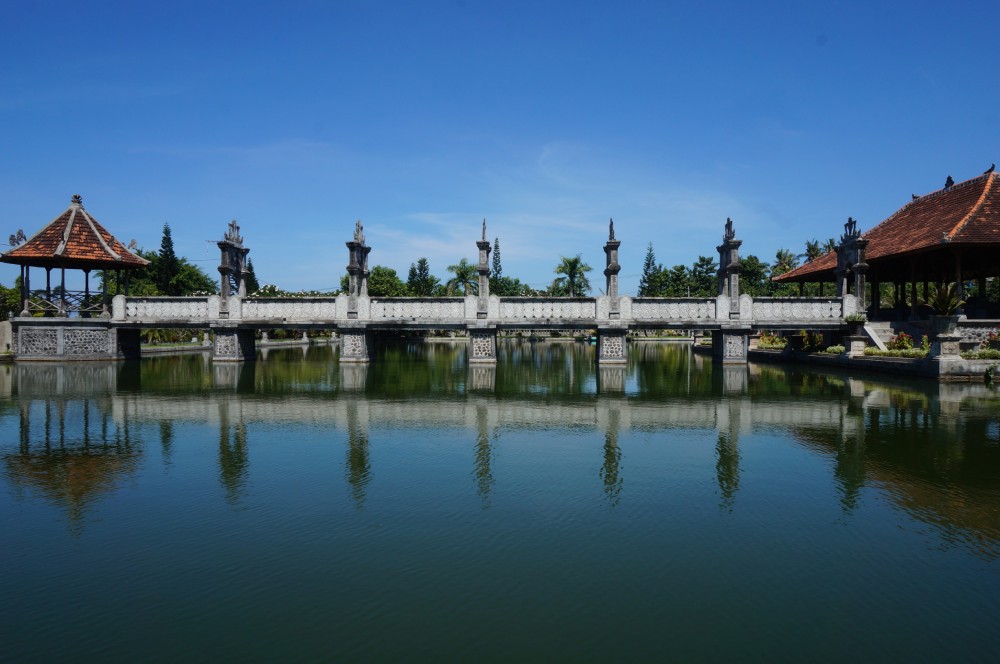
Taman Ujung Sukasada is one of these historical sites. Often referred to as the ‘Water Palace’, it is in some ways a modern puri, or royal palace, built by the last ‘official’ King of Karangasem, I Gusti Bagus Jelantik.
Serving under the title of Anak Agung Agung Anglurah Ketut Karangasem, the king reigned from 1908 to 1950, finding himself in the throws of one of the most significant disruptions of Indonesian society. Ruling during the Dutch invasion, Second World War, Japanese occupation and Indonesian independence was certainly a rocky road for nobility, seeing much of their traditional, feudal structures overturned.
However, it is precisely because of this period of history, and all of its cultural changes, that this palace is so visually distinct and intriguing, making it worthy of a visit when venturing out east.
Found approximately 5 kilometres away from the Karangasem capital of Amlapura, Taman Ujung presides over one of the region’s verdant, coastal hillsides. Its evocative name translates to ‘Garden at the End’, or ‘Garden at the Edge’. The palace’s construction began in 1909 and was only completed in 1921; it was designed around an existing kolam Dirah (Dirah pool), which was built by the previous king, A. A. Gde Djelantik, used as a ‘purification pool’ for those who were suspected of practising black magic. His successor had more cheerful plans for the land, creating a peaceful destination for the pleasure of his family and a place to impress visiting dignitaries — of which there were many.
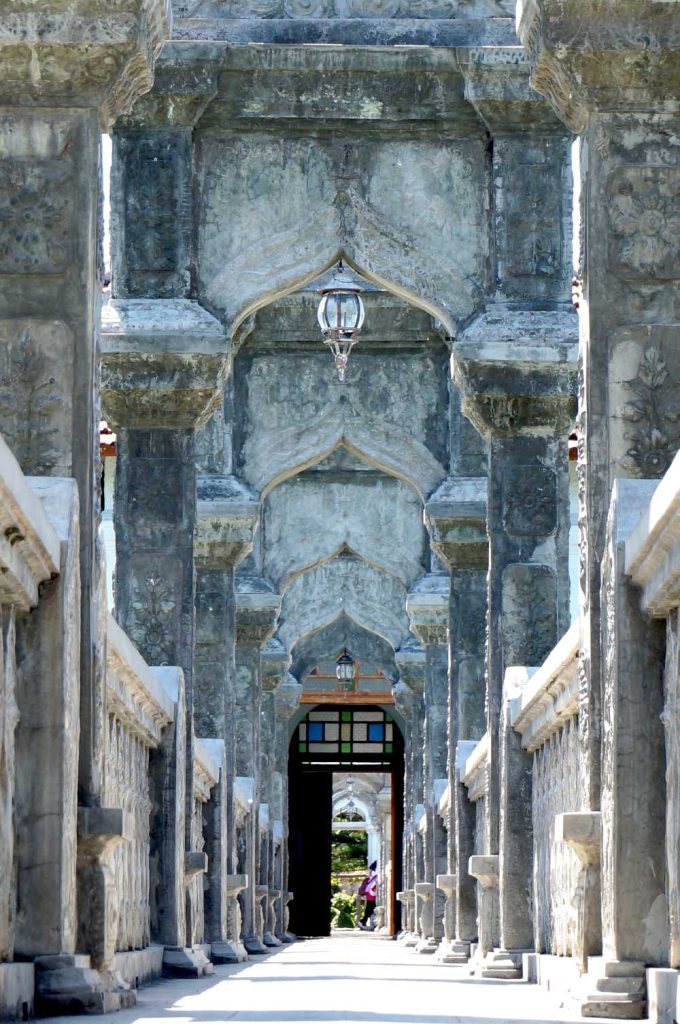
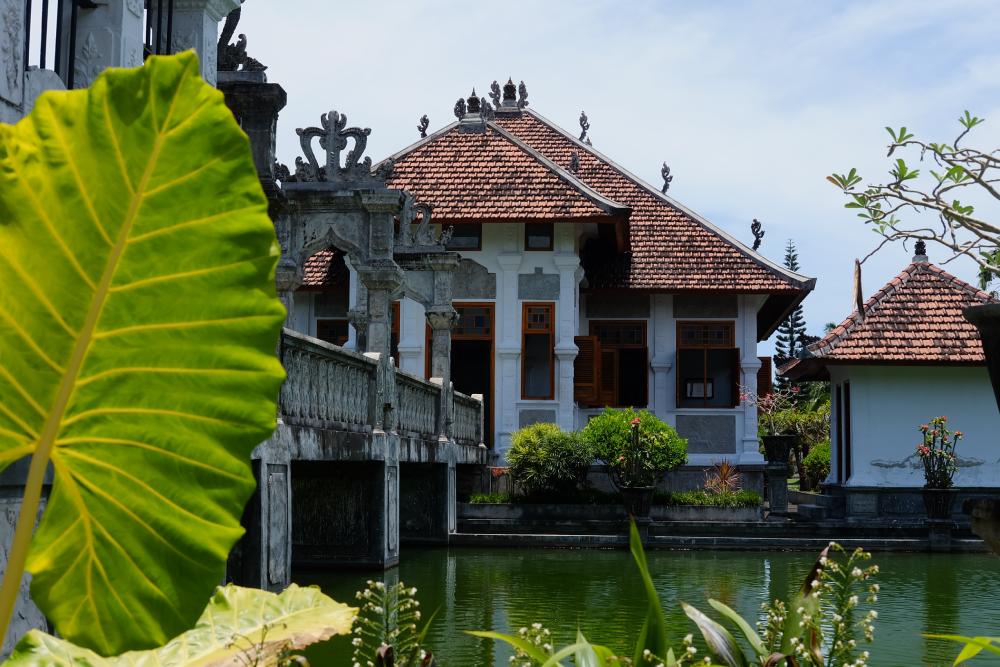
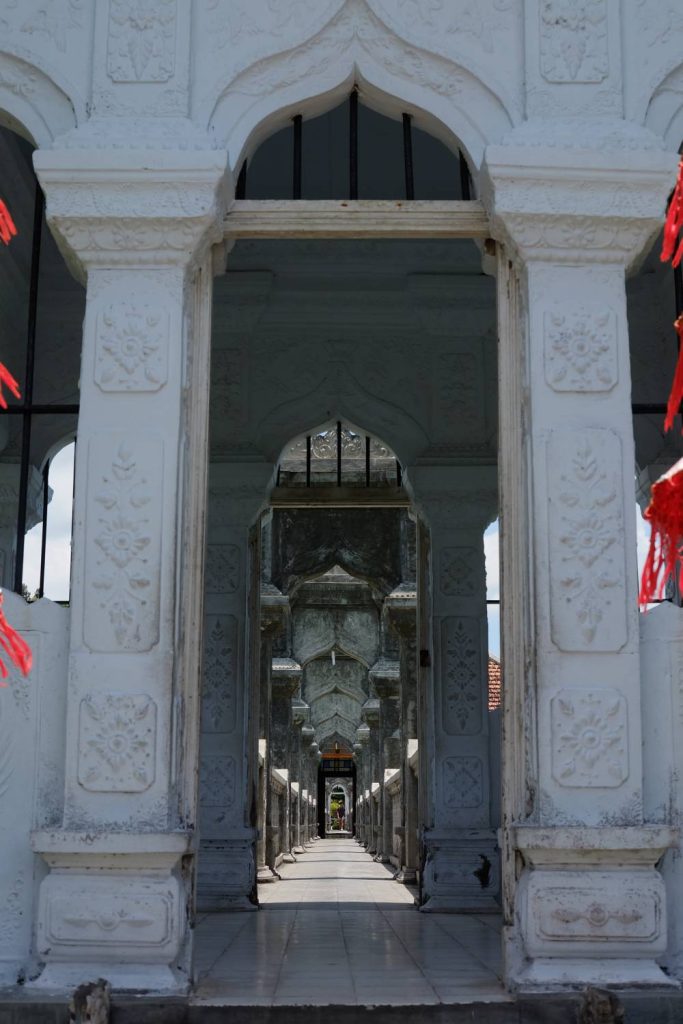
The 10-hectare grounds welcome visitors into a wonderland of impeccably manicured gardens, which very recognisably do not present the typical ‘tropical’ landscaping we would expect across Bali. Alongside the vibrant flowers and sprouting palms are the willowy conifers and potted and shaped shrubbery that are more akin to the stereotypical European botanical garden.
A highlight of the gardens are three large pools, at the centre of which stands the impressive Bale Gili, or ‘Island Bale’, that appears to float majestically atop the vast body of water. The building is connected to the mainland by two long, ornate bridges each with its own pavilion. Like the surrounding gardens, the design of these structures is curious, presenting a fusion of different architectural styles.
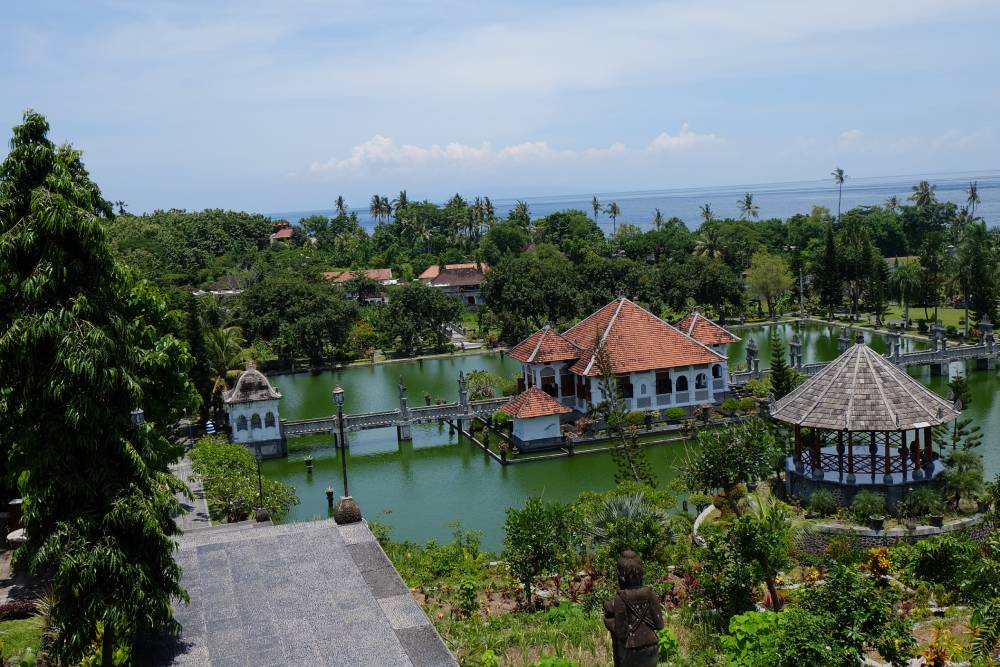
At this point in history, the Dutch already had a presence in Bali and the King I Gusti Bagus Jelantik served under them. Thus, there was far more cultural exchange, and one could say that Taman Ujung is a physical manifestation of this exchange. The palace’s design was envisioned not only by the king, considered to be a learned architect, but also by Balinese undagi (traditional architects), a Dutch architect, Van Den Hentz, and a Chinese architect, Loto Ang.
The Bale Gili is a great example of this fusion of styles, whereby the bale is a closed building (Balinese pavilions are normally open) and takes on the distinct Dutch colonial white façade, blended with Bali’s intricate carvings and embellishments like the notable karang bentala crown ornaments that stand on the bridges’ archways and on the roof of buildings. The use of concrete is also a sign of a Western influence, with decorative concrete moulds featuring Balinese motifs showcasing a localised utilisation of what was considered new technologies. This use of concrete can also be seen at the royal family’s main palace, Puri Agung Karangasem.
It is a marrying of the east and west, and an example of Bali adapting to being open to the world. Still, Balinese philosophy runs thick through Taman Ujung, with the main pool symbolic of Ksirarnawa, the milky ocean, and the Bale Gili said to be Mt. Mandhara Giri, both used by the gods to obtain the elixir of life, amerta.
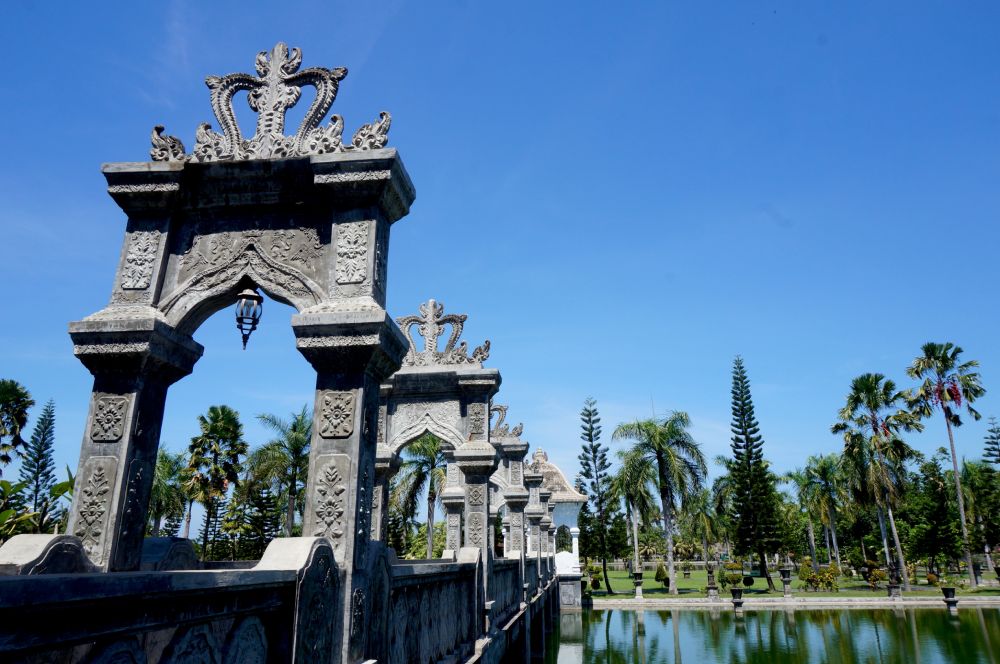
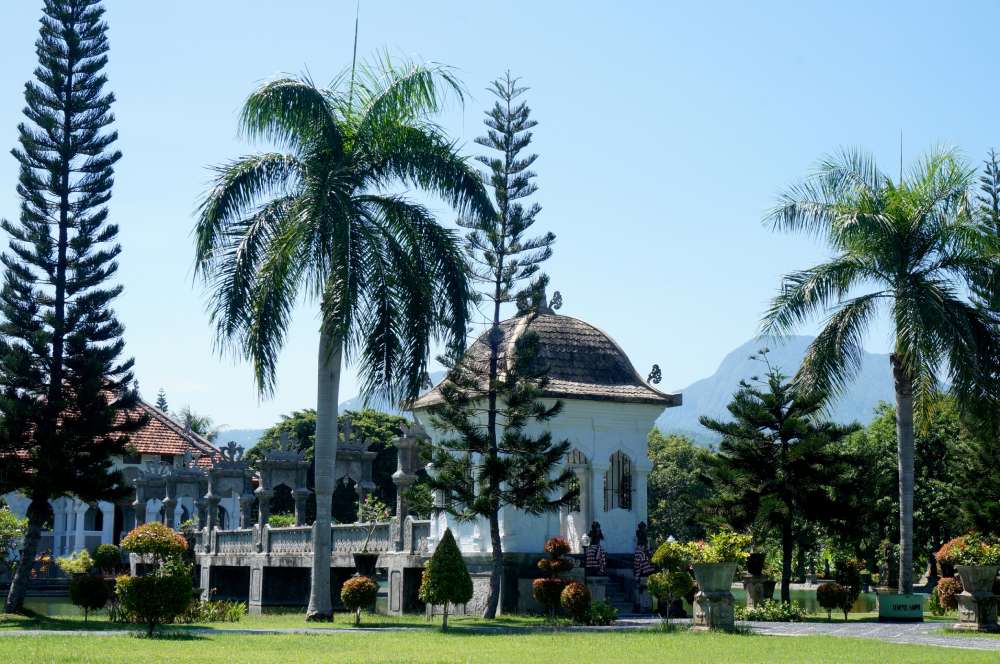
During its heyday, the king welcomed the King of Siam (Thailand), the Governor General of the Netherlands, and the Sultans of both Surakarta (Solo) and Yogyakarta. Such was its reputation that the Dutch gave it the name Waterpaleis (water palace) which has stuck to this day.
Unfortunately, the cataclysmic eruption of Mt. Agung in 1963, as well as subsequent earthquakes in 1976 and 1978 devastated the whimsical water palace, leaving it nearly completely destroyed. It was abandoned for decades before a major restoration and reconstruction project began in 1998, finishing in 2001.
One original building remains, the Bale Kapal. Reached by climbing a majestic flight of stairs on the west side of the palace, the Bale Kapal perches high above the ponds and looks out across the entire gardens to a backdrop of coconut groves, Ujung Beach, and Mt Lempuyang beyond.
Today, the restored Taman Ujung Palace remains a highlight destination in the east, offering a glimpse into Bali’s royal-colonial past through its heritage buildings and verdant grounds. The Bale Gili houses historical photographs and provides more context to the beautiful legacy of the 20th-century king.









